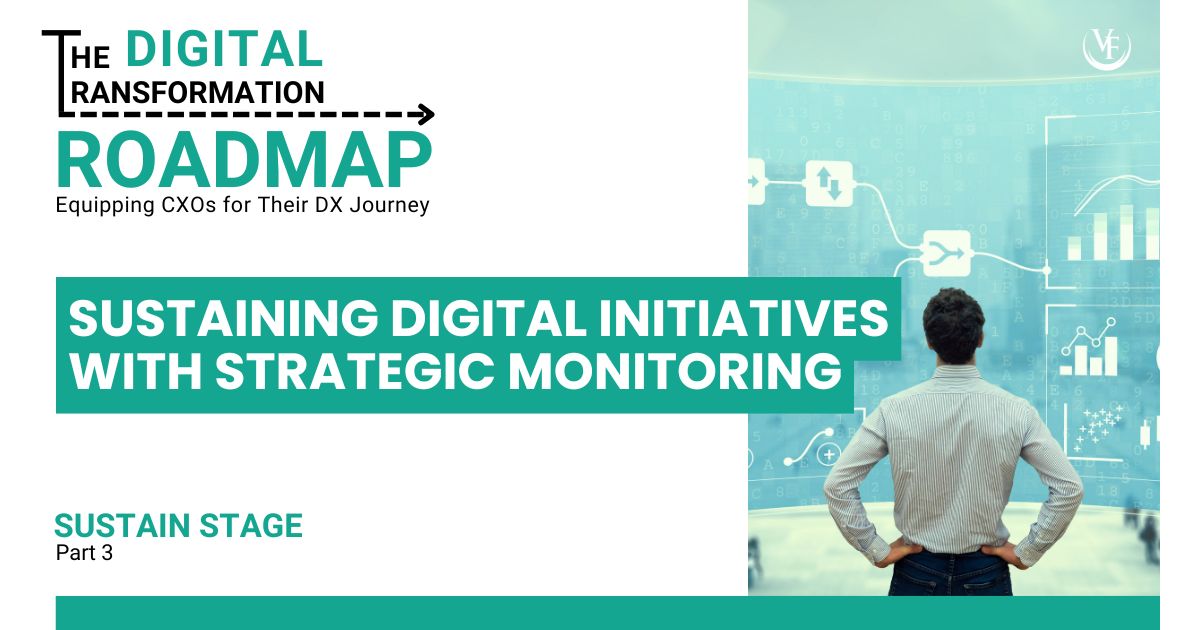
What if I told you that most businesses overlook one of the keys to sustaining success in their digital transformations? For all the time, effort, and capital organizations pour into transformation projects—whether it’s implementing a new ERP system or scaling AI-driven solutions—most fail to establish the infrastructure necessary to continually measure their success. The result? A slow decline in data quality, unnoticed system health issues, and missed opportunities to maximize ROI.
The solution? Defining and building strategic monitors. Creating these frameworks doesn’t just provide you with a snapshot of progress—it equips you with the tools to assess success factors, monitor data quality, and ensure systems remain healthy for the long term. Let’s take a closer look at how monitors can optimize your digital transformation ROI and precisely why your organization needs them.
The Problem With “Set It and Forget It”
Many companies still approach digital transformations with a point-in-time, checklist mentality. Once the initiative is complete, they fail to build ongoing processes to measure success. If they do measure, it’s often a one-off assessment, leaving them blind to subtle but impactful shifts over time.
Here are two key issues companies face without strategic monitors:
#1 – Neglected Data Quality
Companies work incredibly hard to optimize data during a transformation, especially in significant projects like ERP implementations, but fail to maintain that quality post-implementation. Over time, even small inconsistencies and deviations can compound into data that can no longer be trusted. Poor data quality leads to inaccurate reporting, unreliable analytics, and inconsistent AI performance.
#2 – Unnoticed System & Process Failures
Without regular monitoring, small system issues or broken processes may go unnoticed until they manifest as catastrophic failures. What could have been managed proactively turns into costly, time-consuming disruptions.
By disregarding regular monitoring, businesses risk squandering the returns on their digital investments. The opportunity lies in shifting from reactive fixes to proactive monitoring.

Transformation is not easy, but it doesn’t have to be impossible. Take control of your project’s success today and schedule a free 30-minute consultation to find out how Victoria Fide can equip you for transformational success.
How Strategic Monitoring Delivers Value to Post-Transformation Businesses
Defining and building monitors isn’t just helpful, it’s essential. In our previous article, we discussed the importance of measuring your success criteria to validate your ROI. But why would you measure your success only once when you can instead invest that time building monitors that would conduct those measurements regularly?
Strategic monitors act as the eyes and ears of your digital transformation, continuously collecting data and ensuring success isn’t just achieved but sustained. Here are a few areas in which monitors deliver value:
- Success Factors: They allow you to track data aligned with your transformation goals, such as operational efficiency improvements or cost savings.
Example: If you implemented an AI-driven customer analytics tool, monitors could track user engagement rates and retention metrics over time to validate ROI.
- System Health: By regularly checking logs or other system indicators, monitors help identify potential breakdowns before they escalate.
Example: Automated alerts can flag unusual processing errors in an ERP system, enabling quick resolution.
- Data Quality: Strategic monitors ensure data remains clean, consistent, and reliable.
Example: Tracking incomplete or duplicate records in a CRM system to prevent loss of sales opportunities.
- Process Adherence: The right monitors play a crucial role in ensuring that new or improved business processes are both effective and properly implemented.
Example Identifying deviations from standard procedures in inventory management to maintain accuracy and prevent losses.
The key takeaway? Monitors empower your team not only to safeguard the integrity and ROI of transformations but also to identify trends and opportunities for optimization.
Misconceptions That Hold Businesses Back
If monitors are so impactful, why don’t all companies implement them? The answer lies in common misconceptions that need to be debunked:
- “Our system already has monitors”
Systems like ERPs or CRMs often have built-in error logging or reporting tools. But these features aren’t configured automatically, and without a clear process to interpret and act on these logs, they’re underutilized.
- “Monitors don’t add value”
While monitors may not deliver immediate value like a new software feature, they prevent future issues that could drain time and resources. Small proactive measures today—such as flagging recurring data entry errors—can save significant costs down the line.
- “Automation is too expensive”
Automation may seem costly upfront, but it quickly saves time and money, especially when combined with predictive analytics that manual monitoring can’t offer. Today’s tools are increasingly affordable and scalable, making the initial investment worthwhile.
- “It takes too much time to manage monitors”
Assigning monitoring responsibilities to teams affected by those data areas can reduce resistance and even spark ideas for process improvements. Engaging the right people translates to better outcomes.
It is only after leaders unpack and address these misconceptions will they be able to see the full value of monitoring their digital transformation and set their business up for long-term success.
Defining and Building Strategic Monitors
Now that we understand the importance of monitoring, how do you define and build effective monitors for your organization? Follow this process:
1. Define Your Monitors
- Identify What Matters: What data do you need to monitor to achieve your goals? What’s essential for system health or data quality?
Pro Tip: Think beyond basic KPIs and include metrics critical for long-term viability, such as customer satisfaction trends or operational bottlenecks.
- Automate Where Possible: Automation eliminates manual effort and enables real-time monitoring. Leverage available tools like ERP dashboards, custom scripts, or third-party platforms.

2. Build Monitoring Frameworks
- Design Processes: Define exactly who will monitor what and how alerts will be handled.
Example: Assign customer service managers to review CRM logs for flagged workflows.
- Establish Responses: What happens when a monitor flags an issue? Clearly document escalation paths and resolution processes.
3. Utilize Automation & Predictive Analytics
Invest in automation tools that scale as your business grows. Predictive monitors, for example, can forecast trends like vendor reliability or inventory usage, adding unparalleled value.
These steps will ensure you’re not just monitoring for the sake of it but building a robust framework that safeguards your investments.
Maximize Your Digital Transformation Outcomes
The path to sustained digital transformation success lies in proactivity. Strategic monitors provide you with the visibility, data quality, and system reliability necessary to achieve and maintain your business goals.
If you’re serious about maximizing your transformation ROI, don’t stop at implementation. Carefully design and build the right monitors, empower your teams to take ownership, and leverage technology to stay ahead.
Want more expert insights on sustaining your digital transformation? Subscribe to our newsletter and stay informed. Together, we’ll help you unlock the full potential of your investments.

